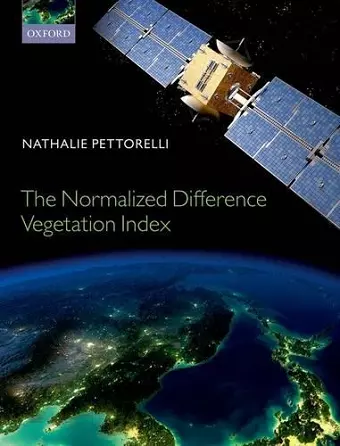The Normalized Difference Vegetation Index
Format:Hardback
Publisher:Oxford University Press
Published:10th Oct '13
Currently unavailable, and unfortunately no date known when it will be back

There has been a recent surge of interest in remote sensing and its use in ecology and conservation but this is the first book to focus explicitly on the NDVI (Normalised Difference Vegetation Index), a simple numerical indicator and powerful tool that can be used to assess spatio-temporal changes in green vegetation. The NDVI opens the possibility of addressing questions on scales inaccessible to ground-based methods alone; it is mostly freely available with global coverage over several decades. This novel text provides an authoritative overview of the principles and possible applications of the NDVI in ecology, environmental and wildlife management, and conservation. NDVI data can provide valuable information about temporal and spatial changes in vegetation distribution, productivity, and dynamics; allowing monitoring of habitat degradation and fragmentation, or assessment of the ecological effects of climatic disasters such as drought or fire. The NDVI has also provided ecologists with a promising way to couple vegetation with animal distribution, abundance, movement, survival and reproductive parameters. Over the last few decades, numerous studies have highlighted the potential key role of satellite data and the NDVI in macroecology, plant ecology, animal population dynamics, environmental monitoring, habitat selection and habitat use studies, and paleoecology. The chapters are organised around two sections: the first detailing vegetation indices and the NDVI, the principles behind the NDVI, its correlation with climate, the available NDVI datasets, and the possible complications and errors associated with the use of this satellite-based vegetation index. The second section discusses the possible applications of the NDVI in ecology, environmental and wildlife management, and conservation. This practical handbook is suitable for terrestrial ecologists and conservation biologists working with remote sensing tools. It will also be of relevance and use to both graduate students in the biological and ecological sciences and specialists in the fields of conservation biology, biodiversity monitoring, and natural resource management.
It is clearly a system with enormous potential, and a tool that needs to be taken into account with other data sets in monitoring vegetation changes from the local to a global scale. * Biodiversity and Conservation *
ISBN: 9780199693160
Dimensions: 245mm x 192mm x 17mm
Weight: 652g
206 pages